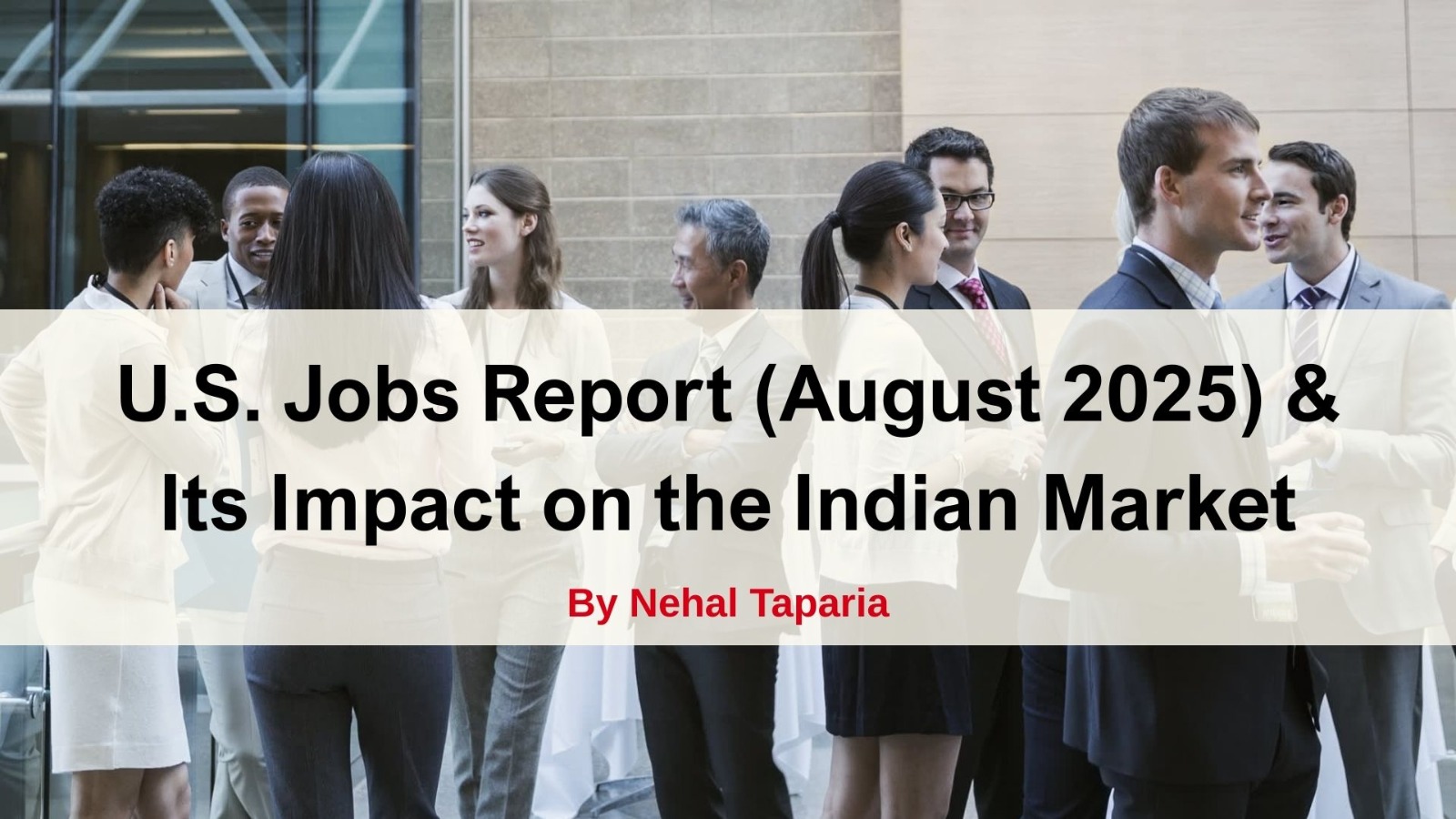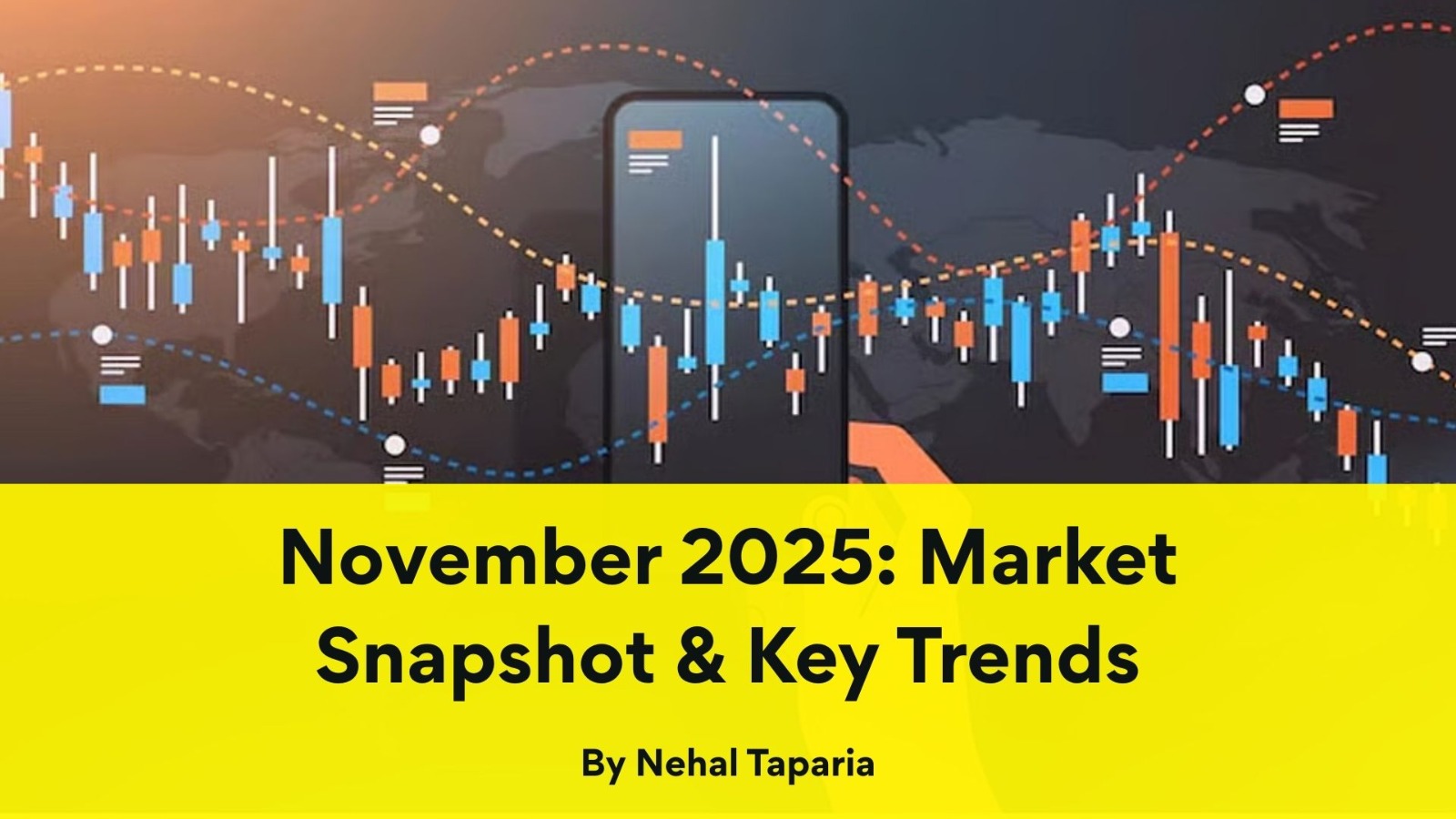U.S. Jobs Report (August 2025) & Its Impact on the Indian Market

U.S. Jobs Report (August 2025) & Its Impact on the Indian Market
Headline Takeaways
Just 22,000 jobs added in August—far below the forecasted 75,000.
Unemployment rate rose to 4.3%, signaling a clear slowdown in labor market momentum.
Markets responded with a weaker dollar and lower Treasury yields, fueling rate-cut expectations from the Federal Reserve.
Why It Matters
The U.S. labor softness strengthens speculation that the Fed will initiate rate cuts starting mid-September—reportedly planning two or three cuts this year.
Dovish Fed policy typically weakens the dollar, which can have broad global financial implications.
How It Affects the Indian Market
1. Currency (Rupee)
A weaker dollar often eases depreciation pressure on the Indian rupee, offering relief to importers and improving the outlook for inflation.
2. Equity Market
Rate cuts in the U.S. could trigger a global liquidity influx, possibly boosting Indian equities, especially in sectors like IT and exports.
Conversely, cost pressures from trade tensions—such as the recently imposed 50% U.S. tariffs on Indian exports—could dampen enthusiasm.
3. Exports & Trade
A softer U.S. macro outlook may weaken demand for Indian exports, especially in tariff-affected sectors like textiles, gems, jewelry, and seafood.
4. Inflation & Monetary Policy
A stable or stronger rupee lighten input costs, aiding in controlling inflation—a key consideration for the RBI's policy stance.
However, existing tariff-induced supply chain disruptions may continue to add pricing pressure, complicating inflation dynamics.
5. Investor Sentiment & FPI Flows
Easing U.S. interest rates could divert global investment toward higher-yielding emerging markets like India, lifting foreign inflows.
By Nehal Taparia
This content is for educational and knowledge purposes only and should not be considered as investment or Trading advice. Please consult a certified financial advisor before making any investment or Trading decisions.
Our Recent FAQS
Frequently Asked Question &
Answers Here
Q1: Why did U.S. job growth fall so short?
Economists point to reduced labor supply (due to stricter immigration policies), uncertainty from high tariffs, and potential revisions to past data—all contributing to weak hiring momentum.
Q2: Will the Fed actually cut rates soon?
Q3: How will the rupee react?
Q4: Will Indian exporters benefit from a weaker dollar?
Q5: Should Indian stock investors be optimistic?
Q6: What about RBI's policy direction?
Copyright © By Empirical F&M Academy. Design & Developed by Techno Duniya


.jpg)


.jpeg)




